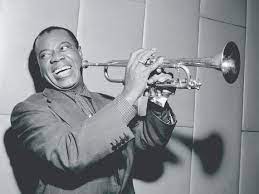Historical Background


Significant Places
Chicago – Urban blues originated in Chicago as street music performed by part-time musicians at rent parties and other black community events.
Mississippi– Mississippi is frequently referred to as the “Birthplace of the Blues,” a moniker that derives from the oppressive sociopolitical circumstances that influenced the development of the music, the historical overrepresentation of Mississippi natives among blues recording artists, and the significant influence of musical genres that originate in Mississippi.
New Orleans– Teenage pianists like Jelly Roll Morton entertained patrons in the brothels of 1890s New Orleans with an unidentified concoction of ragtime, barrelhouse, and honky tonk that ultimately came to be known as blues and jazz.
Genres
Genres included
Swing– Swing came up in the United States in the late 1920s and early 1930s. From the middle of the 1930s, it rose to widespread popularity. Its emphasis on the off-beat, or ostensibly weaker beat, gave rise to its moniker.
Ragtime– Ragtime is a musical genre that peaked between the years of 1890 and 1910. Its syncopated or “ragged” beat is its defining characteristic. Early 20th-century composers like Scott Joplin, James Scott, and Joseph Lamb made ragtime popular.
Jazz– Jazz began as a music primarily derived from blues. Taking the strict rhythmic and tonal nodes and loosening the structure to provide a more “flowey” style. In the beginning, the music was used mostly for dancing and entertainment purposes. Live shows were extremely popular which helped in the progression of jazz artist. Jazz, unlike some other genres, is extremely instrumental focused. Along with the vocals, the bass, piano, trumpet, saxophone, and other instruments are extremely important parts of the song.
Blues-“The Blues” is a secular African-American musical genre that has had a significant impact on popular music. Blues songs deal with a wide range of issues and feelings, and they are at the heart of practically all American music that we hear. This genre established a template or guide for the artists and sounds we hear both past and present.
Instruments Used
The 1900s to 1920s saw the adoption of a variety of instruments; below are some of the more popular ones, along with some performers who were experts on them.
Clarinet
Anthony McGill/ Martin Frost
Saxophone
Lester Young/John Coltrane
Drums
Tony Williams/Kenny Clarke
Trumpets
Louis Armstrong/Dizzy Gillespie
Trombone
Elayne Jones/Janice E. Robinson
Banjo

Horace Weston/Bohemia Brothers
Fashion
For men, the typical attire included suits and formalwear, which were often worn with a bowler hat or fedora. Dress shoes were also a common accessory. However, in some areas, African American men were forced to wear work clothes or uniforms, which did not allow for much expression or personal style.
For women, the prevailing styles included long skirts and blouses, which were often made from heavy fabrics like wool and silk. Hats and gloves were also commonly worn, and jewelry was often limited to simple pieces like earrings and necklaces. African American women who were employed as domestic workers or laborers often wore simple work clothes, which did not allow for much expression or individuality.
W.C Handy
W.C. Handy was an American songwriter and musician known as the “Father of the Blues.” In 1873, he was born in Alabama and began playing the cornet at a young age. Handy is credited for popularizing the blues genre and establishing it as a separate musical style. Many blues songs he wrote and orchestrated became major hits in the early twentieth century, including “St. Louis Blues,” “Memphis Blues,” and “Beale Street Blues.” Handy was a famous instructor and champion for African American musicians in addition to his musical career. Through his publishing company, he helped to establish the first music program at an African American college and pushed to showcase the abilities of black artists.
Duke Ellington
Duke Ellington was an American pianist, composer, and bandleader who was a major force in jazz music. Ellington, who was born in Washington, D.C. in 1899, began playing the piano at a young age and immediately acquired a flair for music. Ellington created his first band in 1917 and began performing in East Coast clubs and theaters. He rapidly became known for his inventive arrangements and distinct musical style, which incorporated elements of jazz, blues, and classical music. Ellington wrote and arranged dozens of tunes during his long and prolific career, including classics like “Take the A Train,” “Mood Indigo,” and “Sophisticated Lady.” He also led one of the most famous big ensembles in jazz history, known the Duke Ellington Orchestra

